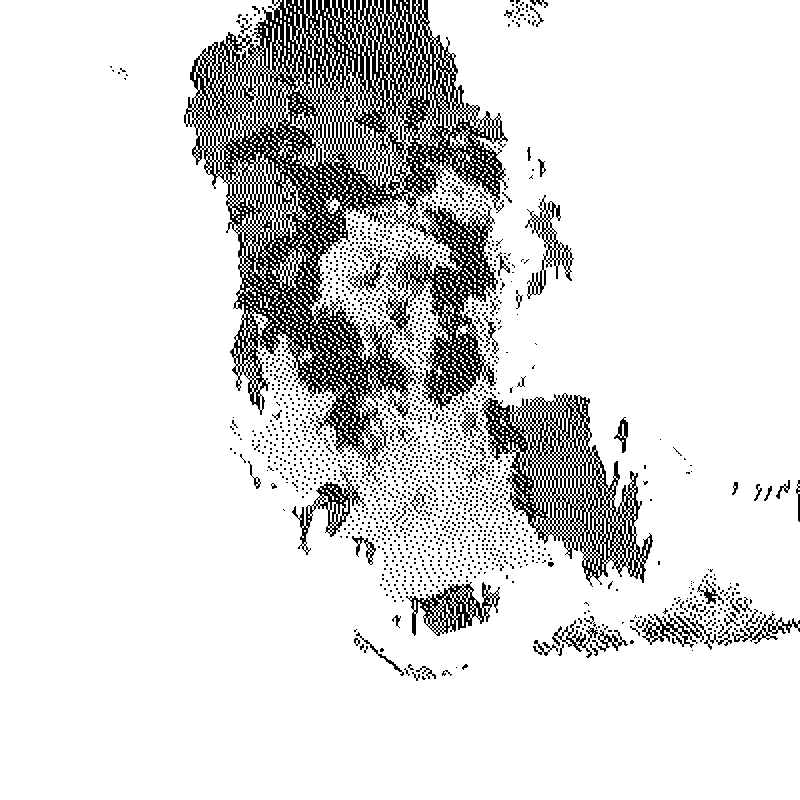Design als Wagnis –
Risiken und Wirkungen der Gestaltung
26th–27th April 2024 in Luzern/Schweiz
Jahreskonferenz der Deutschen Gesellschaft für Designtheorie und -forschung (DGTF)
English Version Below
Spätestens seit der Moderne ist die Designprofession geleitet vom Glauben an ihre gesellschaftsverändernde Wirkungsmacht (Dorrestijn & Verbeek, 2023, S. 46). Dabei versteht sie sich grundsätzlich als eine gestalterische Suchbewegung hin zu einer positiven Veränderung (Simon, 1996, S.111). Die Vorstellungen davon, was als positive Veränderung gewertet wird und wie diese zu erreichen ist, haben sich im Laufe der Zeit verändert. Glaubte man zu Beginn des 20. Jahrhunderts noch an die standardisierte Befriedigung menschlicher Bedürfnisse mittels technisch-sozialem Ingenieurswesen, so erwies sich die Realität gegenüber solchen planerischen Vorgehensweisen als widerspenstig. Gesellschaftliche, ökologische, ökonomische und soziale Probleme folgen keinen kausalen Ketten, die sich durch gutes Design – was auch immer das sein mag – auflösen lassen. Wir haben es stattdessen mit „Wicked Problems“ (Ritter & Webber, 1973, S. 160 ff.) zu tun, die in hochkomplexen Systemen entstehen, getragen von heterogenen, humanen und nicht-humanen Akteuren und geprägt von asymmetrischen Machtverhältnissen und Machtanmaßungen.
Design wiederum, ist kein neutrales, universal einsetzbares Werkzeug, sondern eine stark von weißen, männlichen Weltbildern geprägte situierte «sozio-materielle Praxis» (Mareis, Paim, 2021, S. 11 f.), welche sich in Anspruchsgruppen und Gesellschaften einschreibt (ebd., S. 11). Somit schaffen Designinterventionen zwangsläufig neue Konstellationen und damit auch unvorhergesehene Konsequenzen. Design ist somit mehr als eine konkrete Antwort auf statische Probleme. Designer*innen produzieren Bedeutungen (Krippendorff, 2006), sind Teil von Aushandlungsprozessen in Akteurs-Netzwerken (Latour, 1996) und entwickeln Beiträge für neue Formen des Zusammenlebens im Spannungsfeld zwischen Pragmatismus und Utopie (Fezer, 2013).
Diese Überlegungen führen zu den zentralen Fragen der DGTF-Tagung 2024: Welche Wirkungsmacht hat Design tatsächlich? Wie erzielt Design Impact und wie gehen wir um mit den Konsequenzen des Designs?
Dabei interessieren uns vor allem folgende Themenkomplexe:
Wirkungsmessung: Wie wirkt Design? Welche Formen der Wirkungsmessung sind etabliert, welchen Denkschulen und Verständnissen sind sie entwachsen?
Zielerreichung: Wer bestimmt, wann Design erfolgreich ist? Wie und von wem werden Ziele und Vorstellungen von Erfolg ausgehandelt und welche Rolle spielen dabei Wettbewerb, Konkurrenz und Benchmarking?
Designfolgenabschätzung: Welche Auswirkungen von Design sind erwünscht und wo beginnen die unvorhergesehenen Konsequenzen?
Einbindung von Anspruchsgruppen: Auf wen und was wirkt Design ein? Spielen die tatsächlichen Anspruchsgruppen des Designs bei der Entwicklung von Zielvorgaben, Evaluierungsmethoden und Auswertung eine Rolle? Wie verändert sich diese Rolle in Netzwerken mit ganz unterschiedlichen Stakeholdern und Spezies?
Fehlerkultur: Was bedeutet eine positive Fehlerkultur im Design als Profession, die von Perfektionismus und Erfolg getrieben wird? Wie kommen wir weg vom Dualismus Fehler vs. Erfolg hin zu einem Verständnis offener Lernprozesse und welche Rolle spielen dabei z. B. Agilität und Kultur? Wie werden Misserfolge evaluiert, thematisiert und kommuniziert?
Kommunikation von Impact: Wie können wir anders kommunizieren und darstellen, was Design bewirkt, damit es (endlich) nicht mehr als kosmetische Profession verstanden wird?
Wir freuen uns auf einen interessanten Austausch und hoffen Euch, an der 20. Jahrestagung der DGTF in Luzern begrüssen zu dürfen.
Referenzen:
- Dorrestijn, S., & Verbeek, P.-P. (n.d.). Technology, Wellbeing, and Freedom: The Legacy of Utopian Design. International Journal of Design. Retrieved July 10, 2023, from http://www.ijdesign.org/index.php/IJDesign/article/view/1512/590
- Fezer, J. (2013). Utopische Pragmatik und pragmatischer Utopismus im Design. In Weil Design die Welt verändert … Texte zur Gestaltung (pp. 196–201). Gestalten.
- Krippendorff, K. (2006). The semantic turn: a new foundation for design. Taylor & Francis.
- Latour, B. (1996). On actor-network theory: A few clarifications. Soziale Welt, 47 (4), 369–381. JSTOR.
- Mareis, C., & Paim, N. (2021). Introduction and Prelude. In C. Mareis & N. Paim (Eds.), Design Struggles: Intersecting Histories, Pedagogies, and Perspectives (pp. 11–22). Valiz.
- Rittel, H. W. J., & Webber, M. M. (1973). Dilemmas in a General Theory of Planning. Policy Sciences, Vol. 4 (No 2, June 1973), 155–169.
- Simon, H. A. (1996). The Sciences of the Artificial (3rd edition). MIT Press.
Hazarding Design – Risks and consequences of design
DGTF annual conference 26.–27.04.2024 in Lucerne/Switzerland
At least since the modern era, the design profession has been guided by a belief in its power to change society (Dorrestijn & Verbeek, 2023, p. 46). In doing so, it sees itself fundamentally as a means of bringing about positive change through applied creativity (Simon, 1996, p.111). Ideas about what counts as positive change and how to achieve it, however, have shifted over time. While designers at the beginning of the 20th century still believed in the standardized satisfaction of human needs by means of technical-social engineering, reality proved to be resistant to such planning procedures. Societal, ecological, economic and social problems hardly follow causal chains that can be broken by good design – whatever that may be. Instead, we increasingly find ourselves facing down “Wicked Problems” (Rittel & Webber, 1973, p. 160 ff.) that arise in highly complex systems, propagated by heterogeneous actors – both human and non-human – and characterized by asymmetrical power relations.
Design, in turn, is by no means a neutral, universally applicable tool; it’s a situated “socio-material practice” (Mareis, Paim, p. 11 f.) strongly influenced by white, male worldviews, which inscribes itself in stakeholder networks and societies (ibid., p. 11). Thus, design interventions inevitably create new constellations and thus unforeseen consequences. Design is more than a concrete answer to static problems, deeper than a quick fix. Designers produce meanings (Krippendorff, 2006), find themselves enmeshed in the negotiation processes of actor networks (Latour, 1996) and develop contributions for new ways of coexisting in the field of tension between pragmatism and utopia (Fezer, 2013).
These considerations lead to the central questions of the 2024 DGTF conference:
What effects does design actually have? How does design achieve an impact and how do we deal with the consequences of design?
We are particularly interested in the following issues:
Impact measurement: How does design work? What established forms of impact measurement exist, which schools of thought and understandings do they stem from?
Achievement of objectives: Who determines when design is successful? How and by whom are goals and ideas of success negotiated, and what role do competition and benchmarking play in this process?
Design impact assessment: What are desired impacts of design and where do the unforeseen consequences begin?
Stakeholder engagement: Who and what does design affect? Do the actual stakeholders of the design play a role in the development of targets, evaluation methods and evaluation itself? How does this role change in networks with a wide range of stakeholders and species?
Error culture: What does a positive error culture mean in design as a profession driven by perfectionism and success? How do we move away from the dualism of error vs. success toward an understanding of open learning processes and what role do agility and culture play? How are failures evaluated, addressed and communicated?
Communication of impact: How can we communicate and present the impact of design so that it is (finally) understood as more than a cosmetic profession?
We look forward to an interesting exchange and hope to see you at the 20th Annual Conference of the DGTF in Lucerne.
The conference team:
Andrea Augsten, Merle Ibach, Markus Köck & Axel Vogelsang
References:
- Dorrestijn, S., & Verbeek, P.-P. (n.d.). Technology, Wellbeing, and Freedom: The Legacy of Utopian Design. International Journal of Design. Retrieved July 10, 2023, from http://www.ijdesign.org/index.php/IJDesign/article/view/1512/590
- Fezer, J. (2013). Utopische Pragmatik und pragmatischer Utopismus im Design. In Weil Design die Welt verändert … Texte zur Gestaltung (pp. 196–201). Gestalten.
- Krippendorff, K. (2006). The semantic turn: a new foundation for design. Taylor & Francis.
- Latour, B. (1996). On actor-network theory: A few clarifications. Soziale Welt, 47 (4), 369–381. JSTOR.
- Mareis, C., & Paim, N. (2021). Introduction and Prelude. In C. Mareis & N. Paim (Eds.), Design Struggles: Intersecting Histories, Pedagogies, and Perspectives (pp. 11–22). Valiz.
- Rittel, H. W. J., & Webber, M. M. (1973). Dilemmas in a General Theory of Planning. Policy Sciences, Vol. 4 (No 2, June 1973), 155–169.
- Simon, H. A. (1996). The Sciences of the Artificial (3rd edition). MIT Press.

DGTF in cooperation with HSLU Hochschule Luzern
Website: Conrad Weise Finn Steffens
key visual/graphic design:
Michèle Räz



